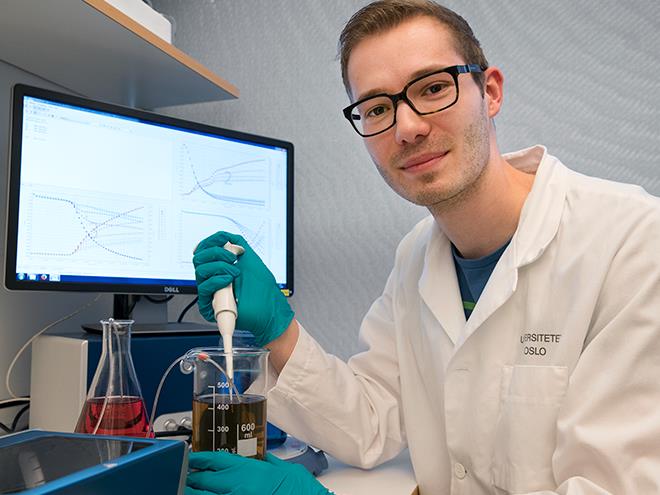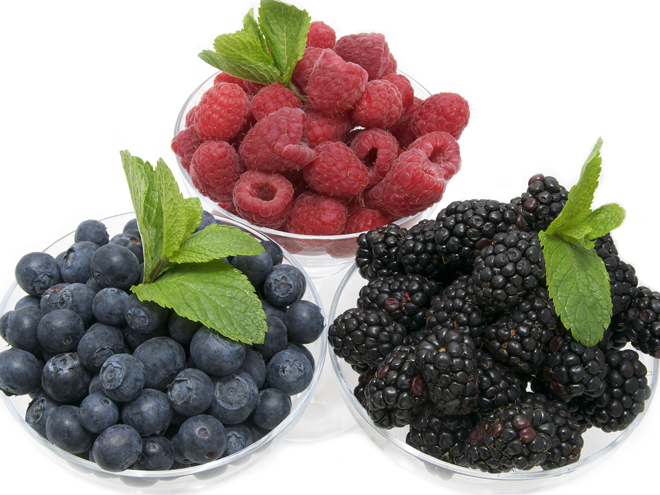Dentures will soon be a thing of the past. These days, people generally have such good dental health that most people keep their teeth their whole life – albeit often in combination with implants. Dental implants are now so readily available that most of us either already have one or are likely to get one at some point in the future. However, they can also be a source of serious illness and discomfort.
Troublesome implants

A dental implant is basically a screw, usually made out of titanium, which is inserted into the jaw bone and acts as a man-made root for the artificial tooth that is mounted on top. Dental implants resemble our own teeth as closely as possible, in terms of both appearance and functionality.
– There are two main criteria that are essential for an implant to be a success: that it sits stably in the jaw, and that bacteria do not find their way to the implant when it is inserted, says Sebastian Geissler, a PhD candidate at the University of Oslo's Institute of Clinical Dentistry.
Still, inflammation around the implant or loss of the bone it is attached to can affect as many as one in five of those who have implants inserted. At worst, the inflammation can become chronic. Could antioxidants, which are credited with reducing cholesterol levels, ensuring a balanced intestinal flora, and preventing cancer, among other things, also be the key to successful dental implants?
A race between cells and bacteria
– Our findings suggest that some types of antioxidants probably can help ensure that implants work better, confirms Geissler.

In his doctoral project he researched how best to ensure that implants are integrated into the bone tissue they are attached to. Using various methods, he has looked at whether it is possible to manipulate the way bone cells (for example in the jaw) respond to the implant. At the same time, he also investigated whether it is possible to influence how bacteria react with the implant.
One overriding issue appears to determine whether an implant will be successful or not – the so-called «race for the surface». Host tissue cells and bacteria race against each other to conquer the surface of the implant.
If the bone tissue cells win this race and conquer the implant, it will heal well and be stable. However, if the bacteria get the upper hand first, they will form a bacterial biofilm, which is an accumulation of bacteria, similar to plaque, where they have favourable growth conditions with little oxygen, meaning they can cause infections later on.
If the tissue around an implant gets inflamed, you may have to have an operation to remove the implant. In extreme cases, infection may cause loss of some of the bone around the implant, requiring even more invasive surgery. – Put simply, the bone cells and bacteria run two rival mechanisms, and the winner ultimately determines the fate of the implant, Geissler explains.
If we can help the bone cells grow and adhere to the implant, we increase the likelihood of the implant forming a firm attachment. "Similarly, if we manage to prevent bacteria from attaching themselves to the implant, this reduces the chance of infection, giving the implant the best possible odds," he adds.
Antibiotics and antioxidants
In his doctoral project, Geissler, who is originally an engineer, investigated how bone cells and bacteria react when an antibiotic is applied to the surface of the titanium implant using an electrochemical method.

Although the experiment showed that the bone cells are stimulated to grow more efficiently and that the bacteria tend to shun the antibiotic and stay away, the actual process that takes place is far too complex for the researchers to be able to control. This method therefore requires more work, for the researchers to be able to understand the whole process.
To the same end, the doctoral candidate and his colleagues also tested a different approach: coating the titanium with polyphenol molecules. Polyphenols are a group of antioxidants found in wine, green tea and cocoa beans, among others.
These experiments had very promising results, and the process is much easier to control and carry out. The implant is simply dipped in a polyphenol solution, and the longer it stays in the solution, the thicker the coating.
– After the coating was applied, we tested how the bone cells and bacteria responded to this surface treatment. All in all, it had a good effect. Although treatment with polyphenols did not stimulate bone growth directly, we found that at least the coating did not have a negative effect on the bone cells. In addition, the coating had an anti-inflammatory potential, and the polyphenols that were released from the surface prevented bacteria from growing, Geissler adds.
He nevertheless underlines that this method still needs further development. In addition to applying a polyphenol coating to the metal, other molecules might also be added to the solution to further promote bone growth.
– Polyphenols, or antioxidants, have properties that prevent bacterial growth. Given the increased threat of antibiotic resistance, it would be much better if we could use these molecules, which are completely natural, instead of antibiotics, Geissler concludes.
First to test polyphenol
The polyphenol coating can be used on a variety of other materials in addition to titanium. This broadens the area of application of the method to include implants made of materials other than titanium, such as ceramics.
The research group that Geissler is part of, the Department of Biomaterials, is a leading research group in research on implants. They are the first to test the effect of applying a coating of polyphenols on how well implants are integrated into the body.
This project is a good example of life science research at the Faculty of Dentistry. The research done by Geissler and his colleagues is closely linked to research in other health areas, particularly the development of other types of implants than dental implants.
The supervisors on the project were professors Håvard J. Haugen, Janne E. Reseland, Ståle Petter Lyngstadaas, and postdoctoral fellow Hanna Tiainen. Geissler has taken his PhD at the Department of Biomaterials under the Industrial PhD scheme. His research project was funded by Corticalis AS and the Research Council of Norway.
References
Geißler, Sebastian, Tiainen, Hanna and Haugen, Håvard J. Effect of cathodic polarization on coating doxycycline on titanium surfaces. Materials Science and Engineering C 2016, 63, 359-366.
Geißler, Sebastian, Barrantes, Alejandro, Tengvall, Pentti, Messersmith, Phillip B. and Tiainen, Hanna. Deposition kinetics of bioinspired phenolic coatings on titanium surfaces. Langmuir 2016, 32, 8050-8060.
Geißler, Sebastian, Gomez-Florit, Manuel, Petersen, Fernanda C. and Tiainen, Hanna. In vitro performance of bioinspired phenolic nanocoatings for endosseous implant applications. Manuscript 2016.
